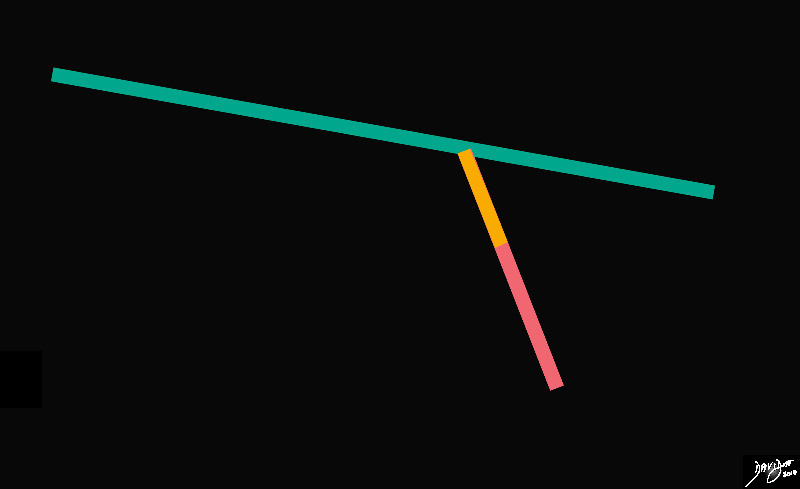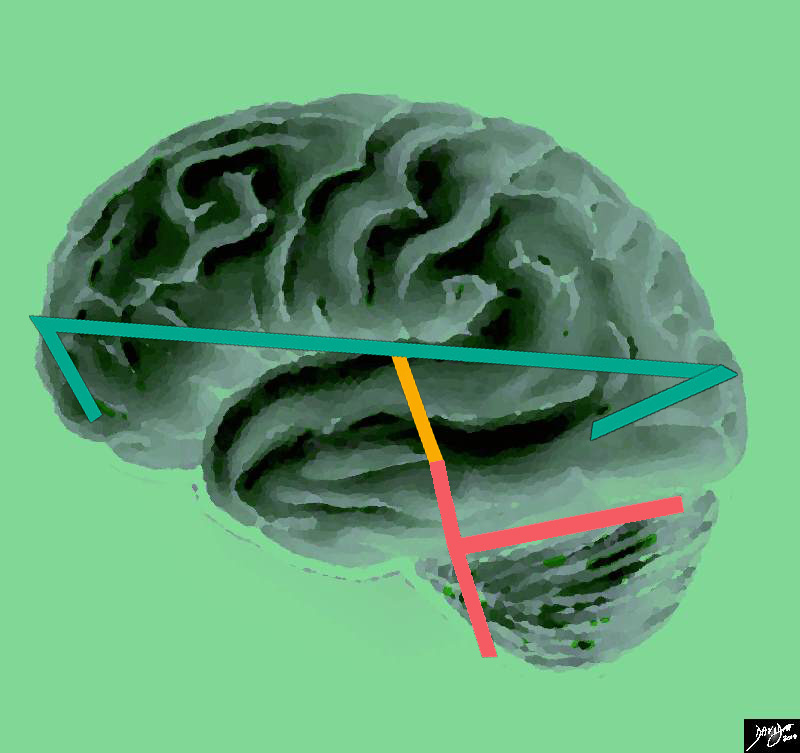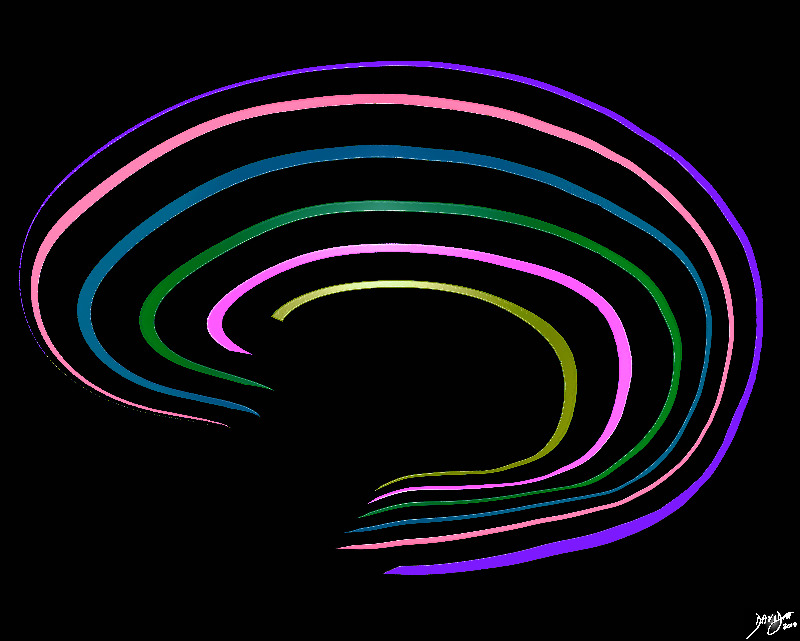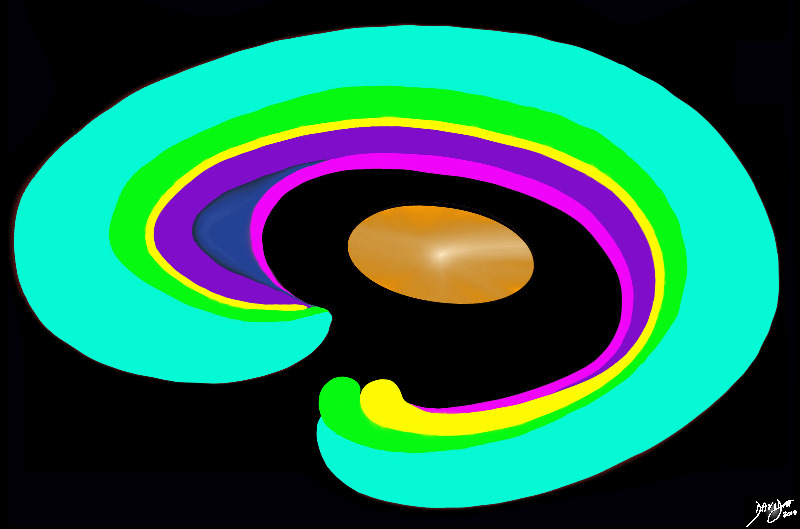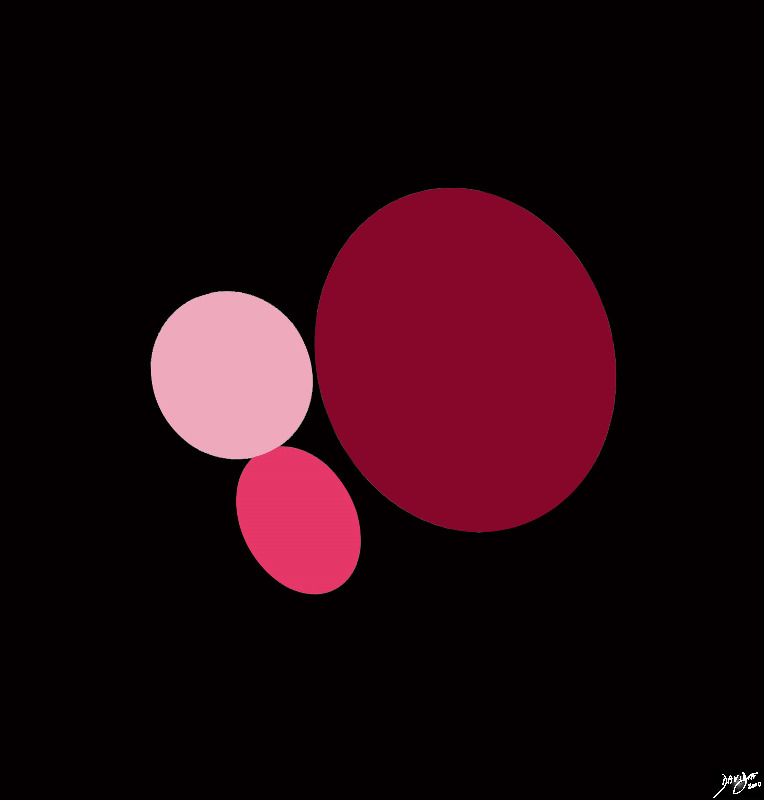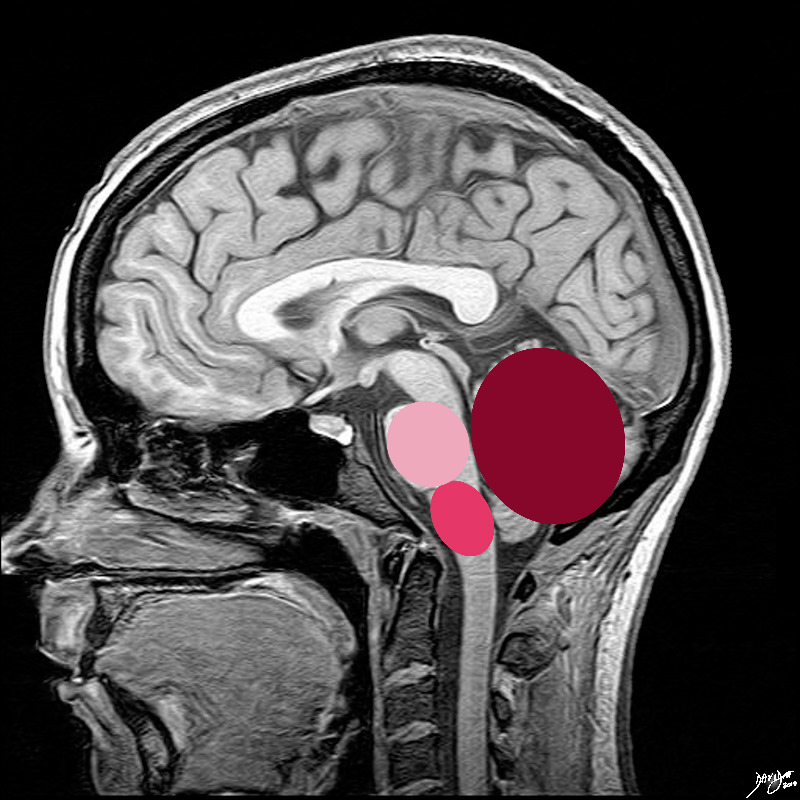The Common Vein Copyright 2010
Introduction
There are many places to start the study of the brain, but we have decided to start with the classical lateral view, and to define the main vectors in this view, and thereafter superimpose the vectors on a brain specimen.
|
The Basic Structure of the Brain from its LAteral Aspect The Brain at its Simplest |
|
The stick diagram divides the brain into a relatively long almost horizontal component, and a relatively short almost vertical component. Anatomically the horizontal component is called the forebrain, and the vertical component will make up the midbrain (orange) and hind brain (salmon) and extend ino the spinal cord Davidoff art Courtesy Ashley Davidoff MD copyright 2010 all rights reserved 93881b02.81s |
|
The Sagital Conceptual Vectors Overlying an External Lateral View of the Brain |
|
The vectors of the brain from a side view are superimposed on a specimen of the brain, showing a long anteroposterior vector of the forebrain (light green) and a shorter more vertical vector consisting of the midbrain (orange) and the hind brain (salmon pink) Davidoff Art courtesy Ashley Davidoff copyright 2010 all rights reserved 83029e04b01.85s |
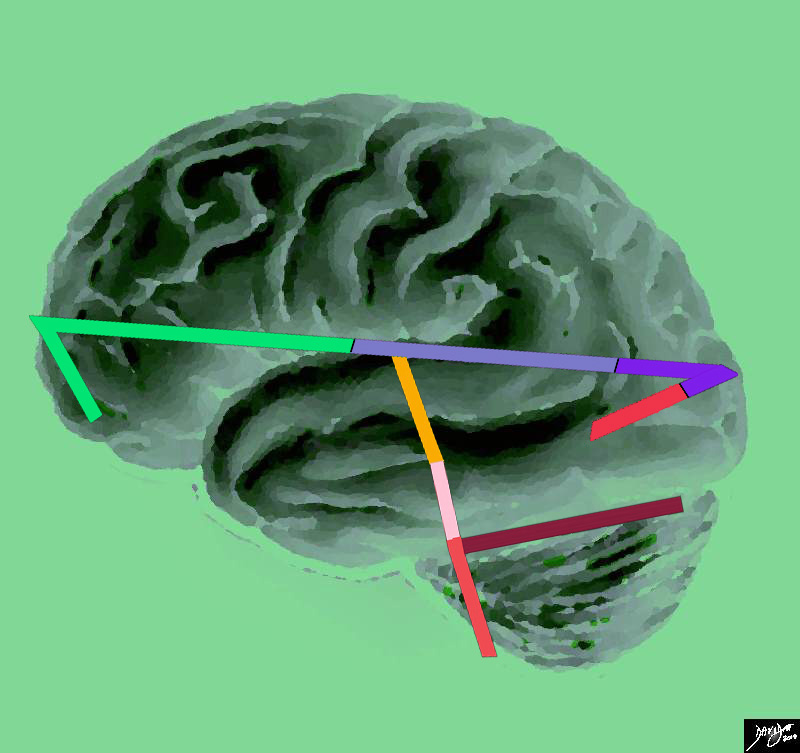
Major Parts of the Brain |
|
This artistic rendition of the brain reflects the vectors of the major parts of the brain with the stick diagram overlaid on a sagittal external view of the brain. In the stick diagram, the forebrain has now been divided into the frontal lobe (bright green), parietal lobe (light mauve) occipital lobe (purple) and temporal lobe (red). The midbrain is represented in orange, and the hind brain consists of the pons (pink) medulla (salmon) and the cerebellum (maroon) Courtesy Ashley Davidoff copyright 2010 all rights reserved 83029e04.83s |
|
Artistic rendition Reflecting the Concept of Inverted C -Shaped Rings |
|
The shape of the brain in general is an ovoid. As one goes beyond the surface in the sagittal plane, the brain can be viewed as a series of inverted c shaped structures. Davidoff art Courtesy Ashley Davidoff MD copyright 2010 all rights reserved 93890b01b06.8 |
|
The Forebrain A series of C rings
|
|
The forebrain has most of its components aligned in a series of c-shaped rings starting from the outer cortex and advancing through a series of smaller inner rings with each intimately connected to the others. The thalamus apeears diagramatically as the center of these rings as seen from the sagittal view Davidoff art Courtesy Ashley Davidoff copyright 2010 all rights reserved 93907b01.8s |
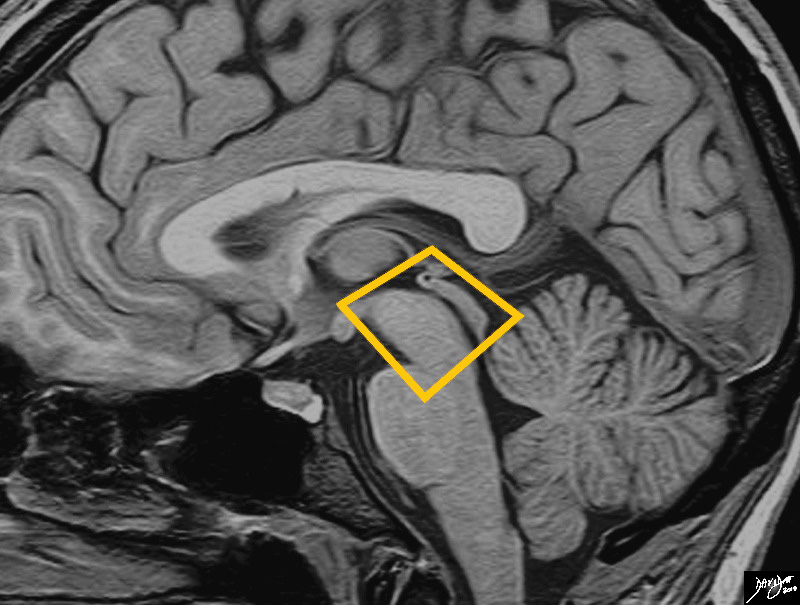
MRI of the Midbrain |
|
The midbrain is an almost rectangular structure that bridges the forebrain and hindbrain. It is the smallest of the 3 major components of the brain Davidoff art Image Courtesy Philips Medical System copyright 2010 92141.3kb03.81s |
|
Conceptual Framework of the Hindbrain |
|
The hindbrain conceptually consists of 3 ovoids The pons is anterior and superior (light pink), the medulla is smaller and is anterior and inferior, and the cerebellum is the largest and is posterior. Courtesy Ashley Davidoff MD Copyright 2010 all rights reserved 92141.3kd03b03b01.8s |
|
The Concept In Vivo |
|
The 3 ovoids are situated in the posterior cranial fossa the pons is anterior and superior (light pink), the medulla is smaller and is anterior and inferior, and the cerebellum is the largest and is posterior. Courtesy Ashley Davidoff MD Copyright 2010 all rights reserved 92141.3kd03b03b.8s |


